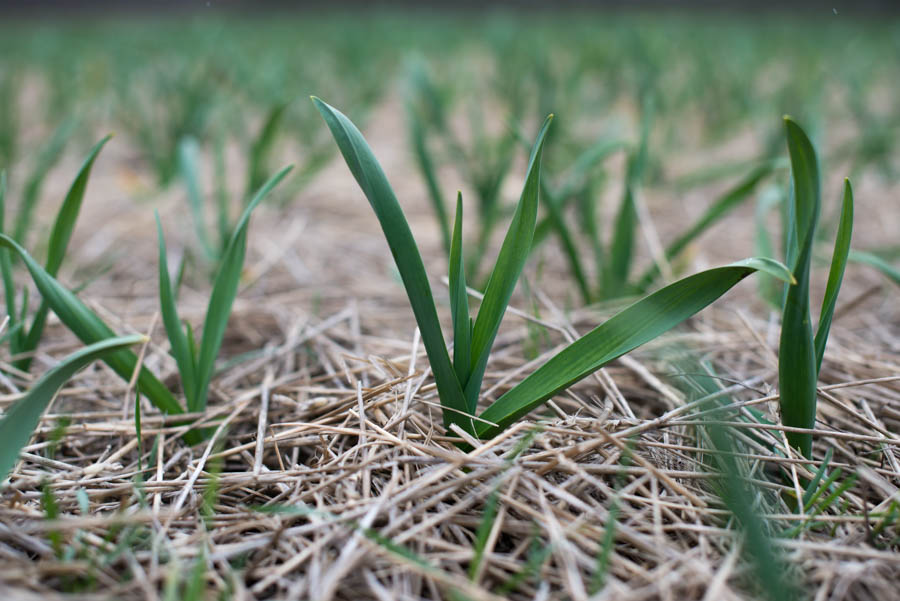Garlic Care and Maintenance in the California Home Garden

If you planted softneck garlic during the appropriate cool season, in well-drained soil with sufficient fertility and nitrogen, you may find that it has sprouted vigorously and has become an easy garden companion. See Growing Garlic in the California Home Garden.
Garlic needs full sun during cool-to-warm weather. It grows and yields best at daytime temperatures of about 50° to 75°F. It needs warmer temperatures within this range for bulbs to mature fully, and tolerates short periods with temperatures of up to 85°F or higher once established. It’s prone to stress and reduced yields during spring heatwaves in areas where temperatures may exceed 85°F by March or April.
Garlic is a moderate feeder that prefers loose, well-drained soils that are high in organic matter at pH of about 5.8 to 6.8.
Watering: The best method for watering garlic is generally drip irrigation, especially in heavy soils, which allows for infiltration of water over time. Consider installing drip irrigation before planting, which can save hassle and damage to plants later on. See Watering Tips for Softneck Garden Garlic for more watering information.
Care and maintenance: Maintain consistent soil moisture. Avoid watering with sprinklers. Prevent wilting. Walking on soil or working near garlic plants, especially when soil is wet after irrigation or rain, may compact soil and encourage diseases.
Garlic tolerates light frost, but plants may perform and yield best when covered with sheets of paper, plastic, or cardboard during frosts. Provide sufficient water and shade during heatwaves. See GardenZeus Tips for Shading Vegetables During Hot Weather.
Garlic benefits from supplemental nitrogen about once per month in most soils for the first few months (while growing leaves and before bulbing). Large, healthy garlic plants during the first few months produce larger bulbs later on. Add nitrogen in the form of diluted urea or a cup of chicken manure diluted in 4 gallons of water (half cup if fresh manure) and mixed thoroughly. Avoid adding nitrogen and other amendments or fertilizers once aboveground plants are full-sized and during the last 2-3 months before harvest.
Weeding and mulch: Garlic is more sensitive than most vegetables to competition from weeds and companion plants. Bulb size will be reduced if weeds or other plants are allowed to compete with garlic for nutrients. Pull or clip weeds when small to avoid root disturbance to garlic. Use a half inch of medium-textured organic mulches such as straw or pine-needles to discourage weeds (see picture above) but also allow air circulation to the soil, and to prevent too much moisture being trapped in soils. Avoid thick or heavy mulches for garlic, such as bark chips. Keep mulch 2-3 inches away from garlic stems to avoid encouraging stem rot.
GardenZeus has customized growing information by plant and zip code. To get started, enter your zip code here.
For more information about growing garlic:
Growing Garlic in the California Home Garden